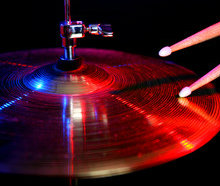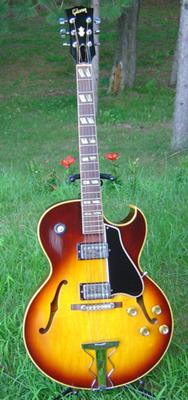Helpful Hints for Tuning Drums
The most important step in becoming good at tuning drums is to practice--tune a LOT!
Be brave--find a sound that is YOU. The more time you spend experimenting with tuning, the less you will fear doing something "wrong". There IS no wrong sound. If you ask every drummer you meet how to tune, you will probably get a slightly different answer from each one.
The sound of your drums depends upon three things:
1. Choice of heads
2. Muffling
3. Tuning.
|
|
Choice of Heads
This is the foundation for later tuning drums and creating your "signature sound." There are many choices available, but the main types of heads are:
Clear heads-- Clear heads are known for their tunability, and bright, open resonance, with plenty of attack. These heads are used by many drum manufacturers as standard for toms and bass drums.Batter Heads are used on the top of drums (the side you strike with your sticks and Resonator Heads are for the underside of the drum.
Drum heads basically come in three thicknesses:thin, medium, and thick. Years ago, Remo gave these thicknesses names: Diplomat, Ambassador, and Emperor . These names are so well-known that if you go to any drum store and ask for, for example, an Ambassador -weight head you will get a medium thickness head no matter what brand you might choose.
So a nice safe choice if you are just starting out with tuning drums would be Remo Clear Ambassador Drumheads for your bass drum and toms. You can make adjustments in the weight as you learn more about what you like.
Coated heads--these are the heads that have
a white coating. They are (in my opinion) best used only for the batter
heads of snare drums. A good basic choice for your snare drum would be Remo Coated Ambassador Drumheads Snare Side heads are much thinner and are used on the bottoms of snare drums. A good choice would be Remo Hazy Ambassador Bottom Snare Drumhead
Hydraulic heads--these heads are 2-ply(have two layers) and have a thin coating of oil between the layers. These first became popular in the 70's and are used as batter heads. They are strong and tune quickly and easily. They have less "ring" and a kind of warm mellow sound. Evans Black Hydraulic Drumhead
Pinstripe heads:PinStripe heads are made from two plies of clear film and bonded at the collar to dampen both high overtones and overall resonance. The result is a very focused, low pitched sound with moderate attack and response characteristics that is ideal for creating a deeper, fatter, controlled drum sound in a variety of studio and live drumming situations. Remo Clear Pinstripe Drumheads
Black Dot heads These heads have a polyester dot laminated to the center of the head for strength and dampening. The outer area of the head's playing surface offers midrange tone and sensitivity while the laminated center "dot" adds durability and tonal focus. Remo Clear Controlled Sound Drumhead (Black Dot)
There are so many choices--how to decide? My advice is to stick with the basics and then when you have a specific sound in mind, try various heads to achieve that sound.
Want to see ALL of the possibilities? Drum Heads
Muffling
Although much of the unwanted overtone sound (ringing) can be controlled by proper methods of tuning drums, there are situations which require a little extra treatment.
If you are in a live situation and have no other resources, you can resort to good old duct tape to get rid of a slight high-pitched ring. You may have to move the tape to different points on the head until you find the source of the ring and you may have to use more than one piece. Place the tape so that it does not interfere with the playing area of the head. Be sure to leave little "handles" on the ends of the pieces of tape so you don't have to scrape it off of your head later.
For a more aesthetic and most times more effective solution for tuning drums, you can make a donut out of an old head. Find an old head the same diameter as the head you need to muffle. Cut around the edge removing only the rim, but leaving the edge flat. Now cut a smaller circle out of the inside piece. The donut should be about 3/4" to 1" wide. Place it on top of the drum's head. If the donut flies off at inopportune moments, affix it to the head with SMALL pieces of duct tape stuck to the rim.
Or you may purchase a commercial version such as REMORINGS These are presized versions of the homemade donut. They now come in a couple different varieties. Choose ones that match the size of your drums. There are also drum heads with built in rings.
By the way how do you measure your drums? Measure from the outside edge of the shell to the opposite outside edge (diameter). Do not include the metal ring. Heads are measured in inches, so if you come up with something in between, you probably need to measure again.
Your bass drum may be muffled by "filling" it with soft, sound-absorbent materials such as blankets or pillows. Just be careful not to deaden the sound too much by overfilling. Or you can cut a hole in the back head. The problem with this is that it is difficult to experiment with the size of the hole. You would need a LOT of bass drum heads! A much cheaper alternative would be Aquarian Regulator Bass Drumhead with Hole
Of
course, there are those who say that drums should NEVER be muffled.
Some things you just have to decide from your own experience.
If you want to learn to play your favorite songs,be sure to check out the ALMOST FREE DRUM TABS on this site!These tabs are tremendously popular due to their quality and guaranteed accuracy.
Tuning
The absolutely best source for a detailed discussion of changing heads and tuning-drums can be found at the
Leave "Tuning Drums" and Return to "Free Drum Lessons"
Leave "Tuning Drums" and Return to "Absolutely Free Music Lessons"





New! Comments
We welcome your comments and ideas! Leave a comment in the box below.